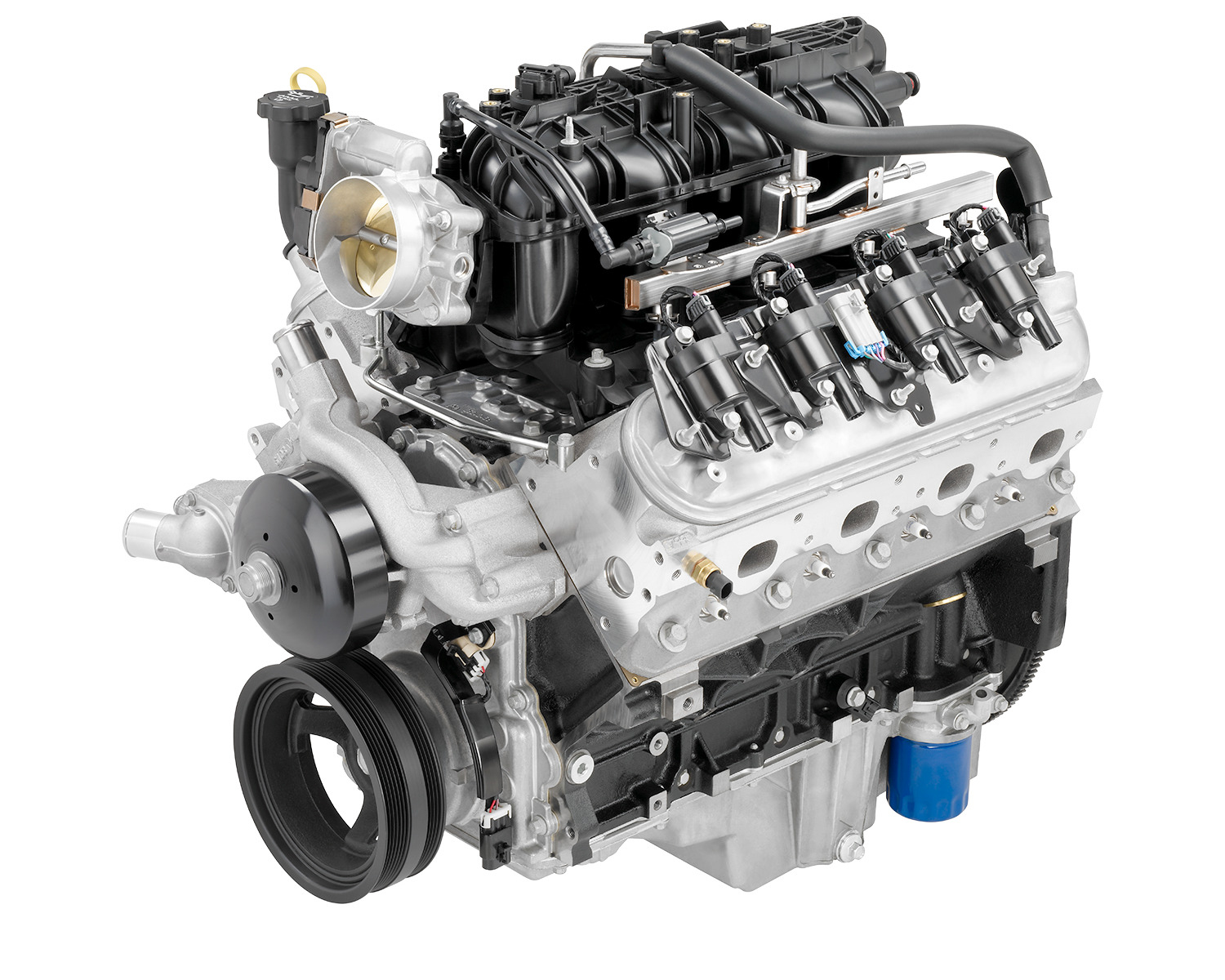GM’s new 6.6-liter small-block V-8 could be a treat for hot rodders
Hot rodders, rejoice—General Motors is bringing back the venerable 400-cubic inch V-8. That’s great news for anyone who lives by the rule there’s no replacement for displacement.
Chevrolet plans to stuff a 6.6-liter engine based on GM’s generation-5 small-block architecture into the 2020 Silverado and Sierra HD. Although the big beast probably won’t appear under the hood of anything with sporting aspirations, GM is bound to offer it as a crate motor so enthusiasts can shoehorn it into anything they like. Granted, it’ll be a bit heavier than other engines, given that it features an iron block like the smaller 6.0-liter L96 motor. But the increased displacement and higher compression ratio allowed with direct injection means you’ll get more grunt. That’s always good.
Although GM designed the 6.0- and 6.6-liter motors for heavy-duty trucks, the larger mill is based on the gen 5 architecture, making it less like the L96 and more akin to the 6.2-liter L86 found in a variety of GM pickups and SUVs. Based on initial specs and the water jackets, it appears that GM modified the design of the aluminum L86 block to suit the iron casting. The two blocks feature a 4.065 inch bore; bumping the stroke from 3.62 inches to 3.86 inches by way of a new, forged steel crank brought displacement to 6.6 liters.

The rest of the engine bears a striking resemblance to the L86. Both use aluminum cylinder heads that appear to be made from similar castings. It remains unclear whether the two engines share the same heads, but it looks like they share design elements—even the valve cover breathers are in the same place. The new engine sports lower compression—10.8:1, compared to 11.5:1—than the L86, in no small part because it’s designed to run on 87 octane fuel. But it’s still an improvement over the 9.7:1 of its predecessor.
Up top, the new motor appears to use the same throttle body found on the L86, and it sports the tall intake manifold that GM uses because it improves low-end torque. That said, the runners look longer. The harmonic balancer seems to be the same, but the 6.6 gets a new water pump with a center-mounted pulley and provisions for a mechanical fan.
Despite the added displacement, the new engine makes less power than the smaller 6.2-liter L86—at 401 horsepower, it’s down 19 ponies—but a tad more torque at 464 pound-feet. The added displacement provides more grunt down low to help get a heavy load moving. Peak horsepower also comes on a bit sooner, at 5200 rpm.



A cylinder bore of 4.065 inches and a stroke of 3.86 yields 400.76 cubic inches, making this engine something of a modern 396 Chevy, which displaced 402 cubic inches. And of course the 6.6-liter displacement brings to mind the Pontiac Trans-Am, all of which is to say a crate engine would almost certainly find an audience among hot rodders.
Given that it looks like the new 6.6 shares its cylinder head design with other direct-injection GM small-blocks, factory superchargers from cars like, say, the Corvette should bolt right on, although you may have to customize a pulley or two. Aftermarket supercharger kits shouldn’t be a problem either, and you can bet tuners will develop application-specific kits ASAP.
For those seeking even more displacement, the iron block might be able to take a larger bore than its aluminum siblings, which require upgraded sleeves and specialized machine work to achieve the 4.125-inch bore of the LS7. When it comes to making power, as this new 6.6-liter engine proves, bigger is always better.





